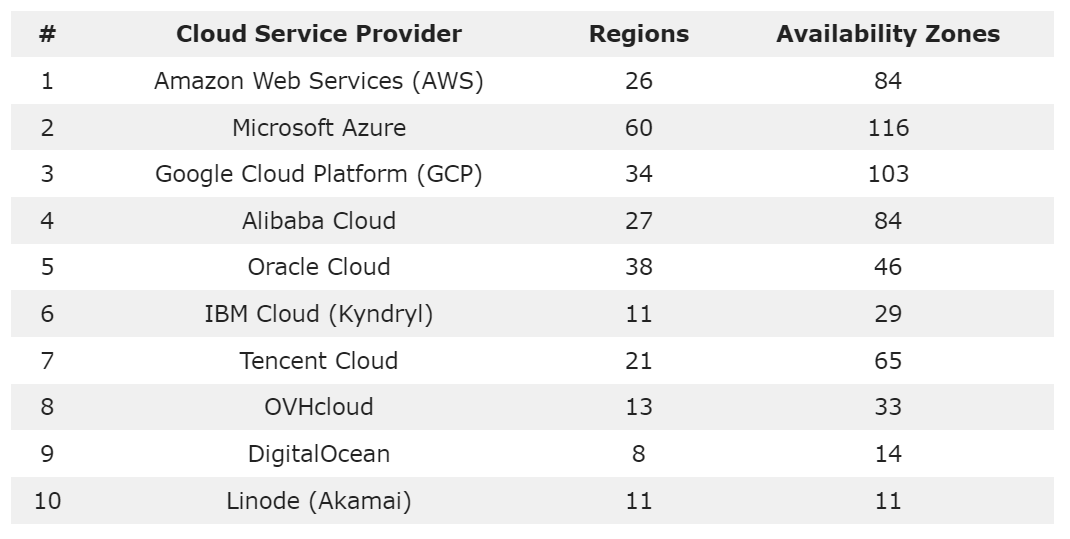Cloud Computing for the Telecom Industry
Cloud computing is the practice of using the capacities of remote servers and their networks to collect, store, manage and process data. Unlike local networks, cloud environments have high-security indicators with broader access possibilities.
In the telecom business, cloud capacities are used very actively. Many business owners create company development strategies in this direction as it provides wide new opportunities. So let's talk about the benefits of cloud computing in the telecom industry, the advantages of such solutions, the challenges they help to overcome, and the pitfalls of their implementation.

What Is Cloud Computing in Telecom?
Traditionally, telecom software requires special computing capacities for correct operation. These are local devices that need to be serviced and monitored. With the development of business, the software scales, so there is a need to increase such capacities and achieve the required level of flexibility. All this leads to additional expenses for the network infrastructure.
Cloud solutions are a new step towards digitization and development. Such computing involves secure remote data storage and processing that doesn’t require additional costs for operational equipment. Cloud infrastructure provides tools for expanding functionality, scaling, flexible response to unpredictable changes, etc.
It’s a mandatory component of the transition from Customer Service Point (CSP) to Digital Service Point (DSP), from vertically integrated proprietary networks with hardware-based infrastructure to cloud solutions that provide new opportunities for expansion due to removing CSP tech limitations.
Some Stats
The telecom cloud market is estimated to exceed $52 billion in 2026 and reach $105 billion by 2030. These impressive numbers show that cloud solutions are a driving force in the industry, so business owners should consider adopting them.

The next generation of telecommunications clouds allows you to combine software-defined networks, cloud technology capabilities, network functionality, etc., into a network distributed across locations and clouds. Data consumption increasing causes ultra-fast digital changes.
Experts claim that the rapid development of this field and the advantages that business receives thanks to effective automation and artificial intelligence lead to the search for new business strategies that will significantly transform the telecom industry.
Main Cloud Computing Models
Most often, companies use three main models of telecom cloud computing:
- Software as a Service or SaaS;
- Infrastructure as a Service or IaaS;
- Platform as a Service or PaaS.
SaaS provides the client with ready-made apps for his purposes. Every SaaS product strategy includes software optimization depending on specific client needs and industry requirements.
IaaS allows the client to use the provider's resources: data storage, servers, etc. PaaS gives the customer access to certain functionality of the provider's software platform.
Each option is suitable for different purposes and needs. SaaS, for example, allows you to effectively maintain databases and have flexible functionality, use the capabilities of various cloud services, etc.
Among the most popular providers of cloud services are Microsoft Azure, IBM Cloud, AWS (Amazon Web Services), Google Cloud, etc.

Source: dgtlinfra.com
Their services are used by telecommunication giants such as Vodafone or Verizon, but anyone can access the facilities. In this case, the development company's task is to choose the suitable interaction model, configure the necessary functionality and provide critical integrations, support and life cycle management tools.
Benefits of Cloud Computing for Telecom Companies
Every telecom company needs timely updating and modernization. Given how fast data consumption and user numbers are growing, such changes must happen rapidly. Otherwise, there is a risk of being overboard forever.
Cloud technologies are a lifeline for telecom businesses. They provide tools for a painless and quick transformation. There are only the main advantages of using such services.
High Marketability
Cloud computing in the telecom industry increases the reach of telecommunications with the help of advanced technologies. Productivity, flexibility and scalability are essential factors in CSP modernization, thanks to which telecom operators can work with software and apps of the latest generations. This, in turn, significantly reduces time-to-market, helps to respond to risks, as well as maintains a high level of service at competitive prices.
Improved Service
Cloud solutions are about process automation and high-quality analytics. Maintenance, testing, or updates can be done in the background. BI methods help to determine possible risks, specific clients' needs and pains, and anticipate them. Behavior prediction allows you to implement the necessary features even before the users think they need them.
It also dramatically expands service prospects. Telecom business owners can use custom software, services based on the Internet of Things, 5G capabilities, etc. The cloud helps better satisfy the fragmented preferences of users. You can use personal attributes and location data for more personalized service, creating offers focused on the user experience.
Flexibility and Scalability
Telecom cloud services allow maintaining flexibility and quickly adapting to new infrastructure needs thanks to automatic de-provisioning and resource allocation. Thanks to this, companies can strategically decide when and how to increase or decrease the operations activity, as well as dynamically adapt them to the load. Flexible resource allocation is not only a way of saving but also a serious competitive advantage.
In addition, the cloud environment allows timely implementation of the necessary technologies, expansion of functionality and easy adoption of innovative solutions. All this is possible without additional equipment or tools.
Data Security and Wide Opportunities for Data Use
The amount of customer data is huge nowadays, and the telecommunications business is no exception. Cloud solutions provide opportunities for extensive backup, simultaneously saving data on several cloud servers and reliable protection against loss and fraudulent activities.
In addition, such solutions allow fast and easy data processing using the latest analytical systems, BI and AI tools. Insights, predictions and trends based on pure data are a major competitive advantage in the telecommunications industry.
Also, these solutions provide access to L4-L7 connections, Virtual Private Network (VPN), OSI network layer monitoring tools, web application firewalls, etc.
Lower Costs
Business owners can pay only for the resources (consumed capacity) they use without spending money on equipment and its maintenance. And the effective distribution of resources depending on the business's individual needs at a specific moment significantly reduces the cloud capacity cost.

How Cloud Computing Helps to Overcome Main Telecom Industry Challenges
The telecom industry covers a large number of users and has an extensive infrastructure. Accordingly, there are many challenges that operators have to deal with every day. We will talk about the main ones and ways to solve them with the help of cloud capabilities.
Updating Challenge
Maintaining good telecommunication structures requires efforts and funds for development. Updating and implementing the latest solutions is the key to maintaining network security and connectivity. And very often, new technology adoption becomes too difficult and expensive.
How Cloud Solutions Solve the Challenge?
Cloud solutions, especially in combination with microservices architecture, are the best way to gradually update telecommunication systems, expand their functionality, introduce new technologies and test them.The cloud environment allows updates without stopping work processes. Broad scalability, in turn, solves the problems of compatibility and bandwidth expansion.
Also, cloud computing for telecom significantly reduces infrastructure maintenance and service costs. Thanks to short and regular update cycles, the system will have all the necessary tools to meet customers' needs without requiring high expenses.
Operations Complexity Challenge
The more coverage and the number of users a telecom operator has, the more complex and chaotic the operational processes become. Requests and tasks grow like a snowball: network maintenance, accounting and reporting, making payments, etc. All this requires human resources and efficient processing tools.
How Cloud Solutions Solve the Challenge?
Cloud computing in telecom industry provides wide opportunities for process automation. Thus, all routine tasks are performed automatically and without staff intervention, reducing human error risk to zero.
In addition, automated scaling helps respond quickly to unpredictable changes and customer demands, organizing the chaos of complex operations. And cloud performance optimization helps to perform tasks rapidly and efficiently.
Personalized Services Challenge
Personalization is an integral part of service in any industry. Users are used to getting individual offers and a quality digital experience. Telecom is no exception.
That is why telecom operators are forced to constantly improve the user experience, create new offers to attract the audience better and meet high support standards.
How Cloud Solutions Solve the Challenge?
The infrastructure of cloud solutions allows you to provide high-quality services in any region. Adopting technologies such as 5G and IoT helps to remain an advanced provider and gradually merge into the new digital world.
In addition, high-quality analytics and BI tools, available in the cloud environment, provide insights for the highest quality personalized service and the creation of unique offers.
Cybersecurity Challenge
The expansion of telecom networks brings many security risks. The telecommunications industry is constantly under attack by hackers as it controls crucial infrastructure. For example, it leads the list of areas most often attacked by malicious botnets. 47% of such malicious actions occur with telecom and Internet providers.
How Cloud Solutions Solve the Challenge?
Cloud solutions provide access to the tools of private and public environments, which allows you to protect personal data from leakage and ensure the security of operations. In addition, cloud providers often offer ready-made solutions for infrastructure security, such as access control, state-of-the-art identity systems, AI to monitor suspicious activity, etc. This is the perfect solution for enterprise data warehouse security.

Cloud Computing Technologies For Telecom Businesses
Speaking of cloud technology in telecom industry, it’s worth noting that there are different types and archetypes. The final choice depends on the competitive environment, the company's business strategy, the level of transformation, the degree of influence of cloud use on value chains, etc.
Archetypes: Optimizers, Disruptors, Innovators
Archetypes are defined based on adoption level.
Optimizers
This archetype uses the cloud's capabilities to
- improve the performance of the existing system;
- improve service and communication with clients due to the optimization of offers based on client needs;
- increase the value of products and services.
Optimizers choose a single cloud solution to improve efficiency. Data acceleration, caching, etc., allows you to provide more advanced connectivity.
Disruptors
Disruptors don’t use easy solutions but look for radically new offers and services or even develop user needs. In this case, the business analysis of unique customer data is a vital tool. The results are combined with other assets and new unique services are created based on them.
These are strong players in B2B services sector. Cloud capabilities help them implement user-centered solutions and create personalized offers.
Disruptors are about advanced analysis of the client's thoughts, needs and behavior; aggregation expertise and end-to-end high-level service.
Innovators
Innovators' main goal is to expand business possibilities, increase product value and profitability through cloud capabilities. They often improve their offerings through resource management services, third-party partnerships, and expansion into adjacent markets and industries.
Innovators improve process management, increase productivity, optimize marketing efforts, etc.
Types of Cloud Technologies
Now, we should consider the key cloud technologies depending on the infrastructure and architecture.
Cloud Native Network Functions (CNNF)
A cloud networking function, or CNF, is a software implementation of a network function that is traditionally performed on a physical device but runs inside containers. As a type of VNFs or Virtualized Network Functions, which are also the embodiment of network functionality virtualization, CNFs have unique orchestration features.
Cloud-native network functions are organized as a combination of VNF and CNF, cooperate with Container Infrastructure Service Management (CISM) and have greater independence from the guest operating system.
Microservices architecture is incredibly effective in extending telecommunications services and networks. It provides opportunities for updates, development, testing, deployment and removal of individual product components without affecting its other components.
In other words, such solutions allow you to easily make dynamic changes, manage features, move components between different environments without stopping operational processes and affecting the user experience. In this case, the role of cloud computing in the telecom industry is huge because instant updates without stopping operation processes are a severe competitive advantage.
Hybrid Cloud
It is a combination of private and public clouds, allowing companies to use the capabilities of both options. This makes the software highly compatible, adaptable and horizontally portable and also increases data security. The user can choose the environment to run the app. At the same time, running in a private cloud environment doesn’t prohibit the use of public cloud tools or services.
Hybrid clouds provide automation of telecommunication processes and broad opportunities for innovation adoption.
Edge Computing
Edge computing provides opportunities to store and process data in real-time by connecting a large number of different devices. This improves network performance, increases bandwidth, offloads data, and thus reduces latency. This technology is often used to launch commercial 5G mobile networks.

What Problems May Telecom Companies Face During Cloud Computing Implementation
The adoption of cloud solutions in telecom software development services is a must. This step provides a serious competitive advantage and brings many benefits. However, the very process of implementing cloud technologies and organizing workflows during it has its own difficulties and pitfalls. Let's discuss some of them in more detail.
The Problem of Choosing a Cloud Technology
We've already talked about the fact that there are several options for cloud strategies, and they all have advantages and specific features. In most cases, telecom organizations prefer hybrid clouds because it is easier to control security indicators without losing software flexibility and functionality since all components of a hybrid environment work together.
However, the strategy option is not always obvious. It is worth taking into account system features, specific business needs and requirements, adoption budget, etc. Therefore, it is better to discuss this with the development team, which will ensure the implementation and maintenance of cloud solutions.
The Problem of Choosing a Cloud Service Provider
Too much depends on the cloud service provider to let things take their course. Even such giants as ABC and IBM cannot provide one-size-fits-all solutions for everyone. Therefore, several important factors have to be taken into account while choosing a cloud services provider, namely
- features of the proposed infrastructure, possible functionality;
- scaling possibilities and functionality expansion within the framework of a specific budget;
- subscription/purchase options, package components;
- features of the security and data protection system;
- proposed speed options and tools for working with the environment;
- maintenance and updating measures;
- microservices architecture support;
- general specifics of cloud computing.
The differences may not be obvious, but they matter. In this case, you will have to check a large amount of documentation and talk to vendor representatives. Or you can entrust it to an outsourcing partner if you work with a dedicated team.
Migration Problem
Migration to a cloud infrastructure is a complex process that requires certain efforts and costs. In addition to the importance of choosing the right vendor, you need to understand the specifics of using databases, security tools, monitoring systems, etc.
So, the development team must consider certain aspects and create a clear plan before starting the migration. It is worth paying attention to the operational requirements and characteristics, to determine the methods of providing, storing and processing data, etc. You will also have to work on capacity planning not to pay for unused services.
In other words, you need a clear roadmap with all the requirements and specifications to migrate safely and efficiently. You also have to choose the right migration strategy. And this is a severe amount of work.
Compatibility Problem
Legacy systems often require a pre-update before migrating to the cloud. Developers choose a migration model according to the capabilities and needs of the system, conduct tests and look for ways to achieve full compatibility. All this requires effort and time.
Data Security Problem
Reliable cloud service providers have ready-made data security solutions, but more is needed. Corporate data needs additional protection in the form of VPNs, private cloud tools, encryption, hardware security modules, etc.
In addition, you’ll have to take care of securely connecting staff devices to the system and establishing strict security protocols to prevent data loss.
Orchestration Problem
Orchestrating in cloud environments requires strict adherence to DevOps practices, as the life cycle of distributed services is complex. It is necessary to take care of the correct allocation of resources, life cycle management measures, finding the optimal software for orchestration, compliance with security requirements, etc.
Silver Lining
Despite the pitfalls we’ve indicated, it is impossible to bypass the transformation of the telecom business and CSP infrastructures in particular. And the benefits of cloud-based telecom services outweigh their implementation difficulties.
How to overcome adopting challenges? There are several ways, but the most efficient and cost-effective is to contact a professional development team. Engineers will evaluate, test and update the necessary software, create a migration roadmap, carry out transformation at the highest level and ensure complete security.

Ardas Experience in Implementing Cloud For Telecom
We were approached by a telecom company from the United Kingdom. Its main activity is providing a Wi-Fi network for hospitality establishments: hotels, villas, resort complexes, etc.
The client was dealing with large customers (worldwide hotel chains); therefore, there was a need for rapid scaling, improved system performance and throughput, and advanced security measures. At the same time, it was necessary to find a way to effectively cooperate with partner providers and develop a solution for collecting, storing and processing large amounts of data.
After analyzing the market and competitors' research, our team created a list of specific business needs and specifications. We immediately decided to use the wide possibilities of cloud computing and set up the system in such a way that the customer could supply its services in the SaaS format.
The team developed a data collection and analysis system that performed several functions at once:
- saving guest data for automatic Wi-Fi access when traveling between different hotel network facilities;
- data collection for analytics and creating statistics for partners and hotel owners;
- ensuring compliance with all safety standards and regulatory requirements.
We also developed hotel LAN management tools and set up a system for quick access to Wi-Fi. Implementing cloud solutions using an advanced SaaS tech stack made it possible to provide fast and uninterrupted connections to large hotel networks without additional costs for local infrastructure.
Wrapping Up
The usage of cloud computing in telecommunication is not just a competitive advantage. This is an inevitable step to provide data security, access to telecom features from any place and device, and the ability to quickly update and scale the infrastructure with no delays. Given that digitalization of business is moving towards the Internet of Things and similar technologies, it’s impossible to stay in the game without cloud solutions.
We have extensive experience in implementing cloud solutions and migrating systems to the cloud environment. Therefore, we can choose the best options for our customers and ensure that all security requirements are met. And we’ll be happy to advise you on these issues; just contact us in a convenient way.
